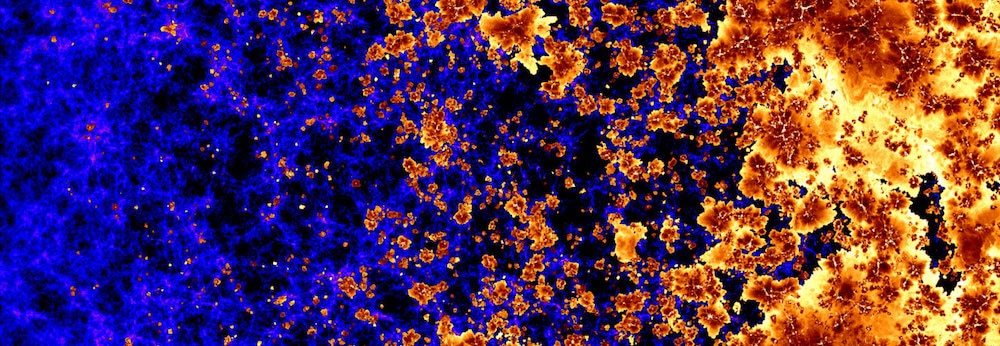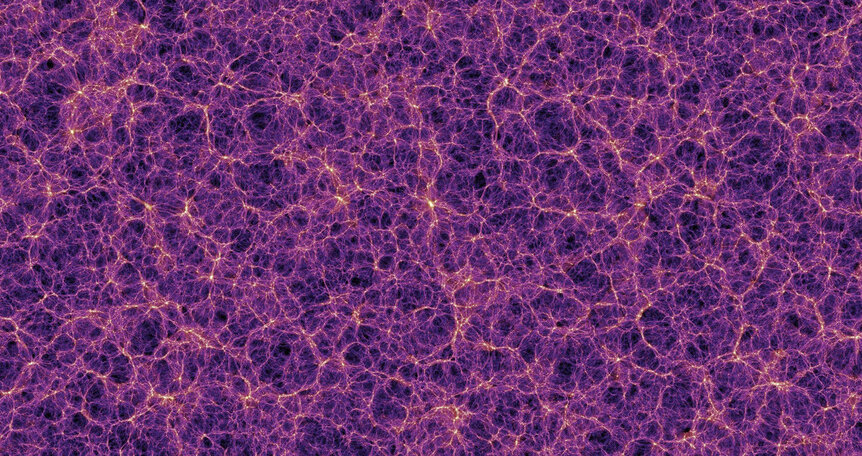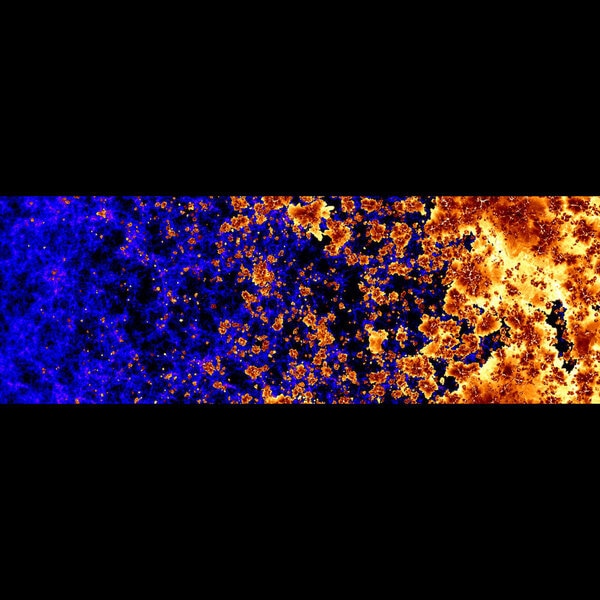Create a free profile to get unlimited access to exclusive videos, sweepstakes, and more!
Watch as a million galaxies form in the first billion years of the cosmos
Dramatic simulation shows light emerging at the beginning of the cosmos.

Studying the very distant Universe is hard. That’s because — not to be too on the nose about it — it’s far away.
That makes it hard for many reasons. Objects that far away are small and faint, so we need big telescopes to see them at all. But the Universe is expanding, and that means the farther away an object is the faster it recedes from us; to get to us the light emitted from distant objects loses energy — what we call redshifting — and at great enough distances that can change ultraviolet light to infrared. James Webb Space Telescope will help with that, but even that grand new observatory will struggle to see past a certain distance.
Another difficult problem is the finite speed of light. At first it sounds like a blessing; looking at objects that are far away means we see them as they were billions of years ago, when the Universe was young, because it’s taken that long for the light to reach us. We can directly observe the early days of the cosmos! But this also means that if we try to look too far back the first stars won’t have even been born yet, galaxies didn’t exist yet, and the light sent to us from that far away distance and time is hard to interpret.
We do have some clues, though. The sky glows in microwaves, the leftover energy from the Big Bang redshifted by a factor of a thousand. The structure we see in that glow tells about the seeds of galaxy superclusters before they even formed. And we have theoretical models for how matter — including dark matter — behaved at the time, giving us at least a framework of understanding of what was going on back then.
But what are the details? How did galaxies grow from the primordial clumping of matter? How did those structures emit light? What happened to that light on its way to Earth?
We have to rely on models of the Universe based on known physics for that. And we do have a lot of physics at our disposal…enough that a team of scientists created a software suite called Thesan — named, appropriately, after the Etruscan goddess of dawn — that can simulate conditions in the early Universe based on how normal and dark matter interact and flow, how magnetic fields behave, and more.
In a series of papers just published [link to papers one, two, and three], they present simulations of a chunk of the Universe 300 million light-years on a side as it evolves over a billion years, starting not long after the Universe came into being in the first place. They trace the amount of light emitted, what kind of light — different atoms emit light at different colors — and what happens to it as it travels. What they wound up seeing is the birth of all the structure we now see as we look out into the cosmos.
As that video unfolds, you can initially see flashes of light coming from low mass galaxies as they form and undergo bursts of star formation. This light spreads out over time, and starts to illuminate the large scale structure in the Universe: gigantic interconnecting filaments of gas that form as dark matter gravitationally collapsed into long streamers, and “normal” matter — protons, electrons, and so on; the stuff we’re made of — as it’s drawn into them. The smallest structures became galaxies, which aggregated into clusters, and clusters of clusters called superclusters.
The time runs from a few hundred million years after the Big Bang to just over a billion years after. For mathematical convenience, cosmologists measure time as redshift; the higher the redshift the farther back in time you’re seeing. That’s represented by the letter z, which I describe in an article about seeing the first stars born in the Universe.
This era of the Universe is an important one. Not long after the Big Bang, the Universe was so hot all the matter in it was ionized; electrons couldn’t combine with protons without immediately getting blasted off again by high-energy light. At this point the Universe was opaque to light, since photons would hit free electrons and go pinging off in random directions.
But as the Universe expanded, it cooled, and over a short period of time electrons combined with protons to form neutral hydrogen. This period is somewhat confusingly called recombination, and occurred something like 400,000 years after the Big Bang. The Universe became transparent to light.
But then, a few million years later, the first stars were born (and, likely, huge black holes were devouring matter and blasting out radiation as well). This high-energy light reionized the Universe, so we call this period reionization. You might think this would make the Universe opaque again, but during all this time the cosmos was expanding, and getting less dense. By the time of reionization, matter was spread out enough that light could still travel a long way before hitting an electron, so the Universe stayed transparent.
However, locally, inside galaxies and around them, matter was thick enough to absorb light. This means that our telescopes, 12 or more billion light years away, have a hard time seeing any light from these distant objects.
The beauty of simulations like Thesan is that scientists can model how light escapes from these galaxies, allowing them to predict what a big enough telescope might actually see. In one paper they actually show models of extremely distant galaxies — what astronomers call “high redshift galaxies” — and what they’d look like if observed by James Webb Space Telescope. That’s nifty, because when JWST starts taking super deep images, it can confirm or refute the simulations. If what it sees is very different, that means the physics input into the simulations isn’t right; maybe the temperatures were too high, or matter was less dense in the real Universe than the models, or the way matter clumped to form galaxies was different. All of this tells us more about the way the Universe behaved when it was young.
For centuries, the biggest questions we could ask were seemingly unanswerable: Why are we here? Why does the Universe look the way it does? How did all this start?
And now, with science, we can start evidence-based investigation of those questions, and check our answers by looking out into the Universe itself.
The cosmos has come a long way. So have we.




























